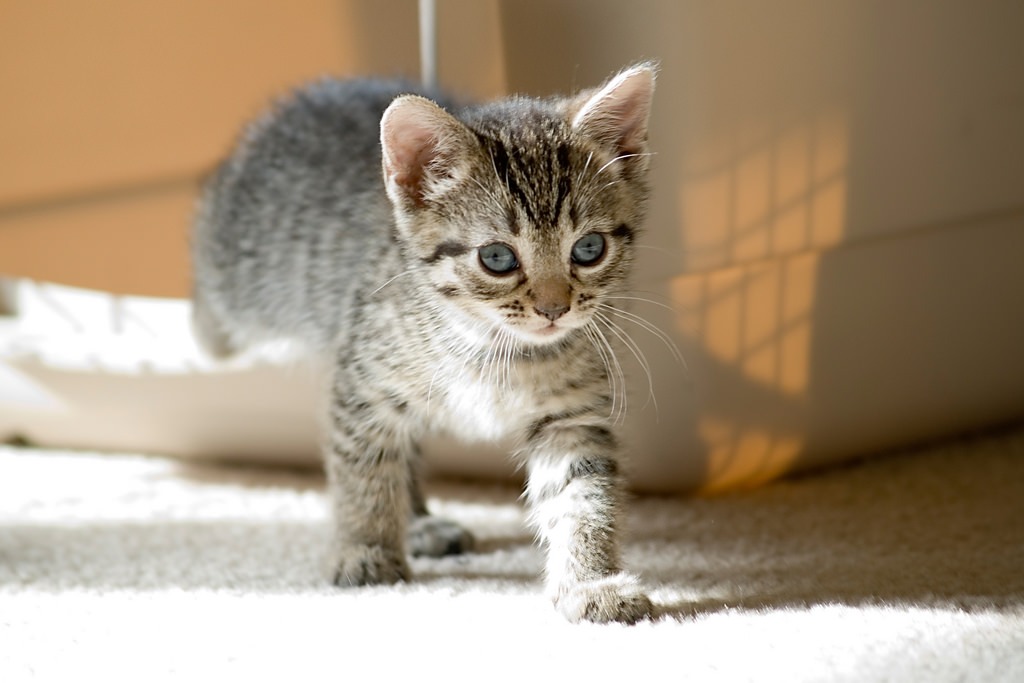In previous posts I’ve written about various causes of coughing in cats, particularly asthma. This week I wanted to share information about an under-appreciated cause of coughing – lungworm infection. Please share this with other cat owners to increase knowledge of this disease. Happy reading!
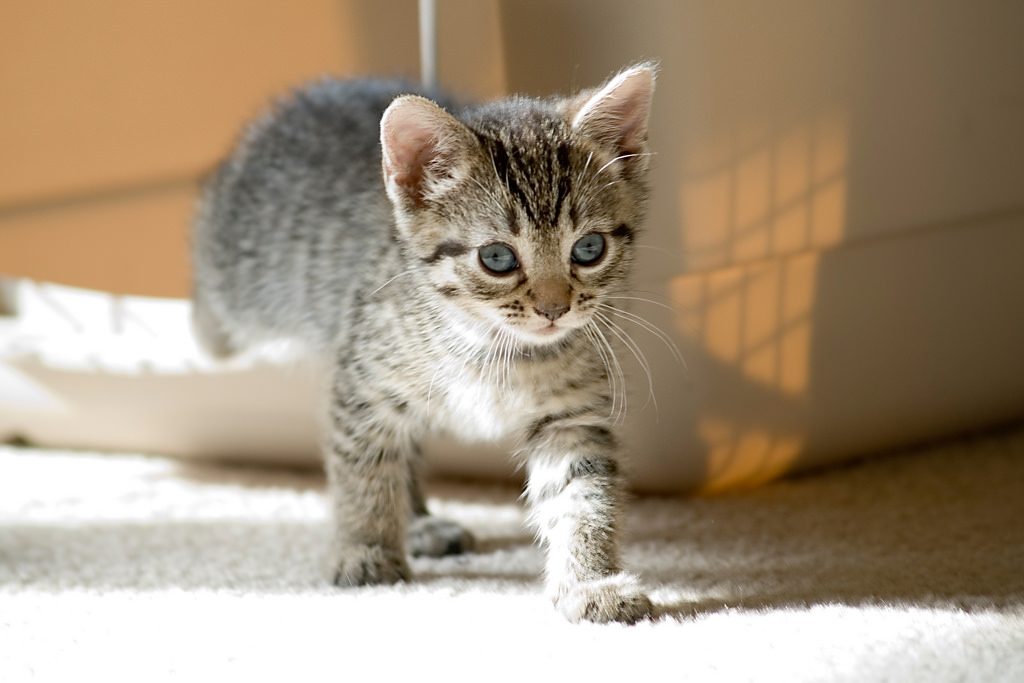
Lungworm Infection – What is it?
Several genera of parasites called nematodes can infect the lower respiratory tract of cats to cause clinical signs, especially coughing. The most prevalent lungworm in domestic cats is Aerulostrongylus abstrusus. This parasite is quite small, measuring only 5-10 millimeters in length and less the 100 micrometers in width. Other commonly encountered lungworms are Eucoleus aerophilus (aka: Capillaria aerophilia), Toxocara cati, Strongyloides felis, and Paragonimus kellicoti.
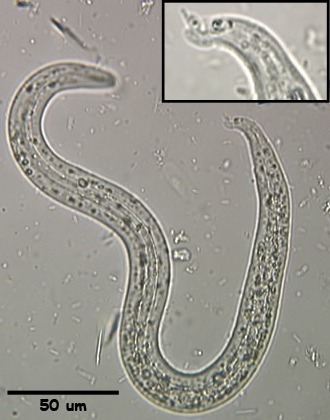
Aerulostrongylus abstrusus has an indirect life cycle that involves terrestrial molluscs like snails and slugs. Various critters on which cats prey (i.e.: rats mice, birds, etc.) ingest molluscs infected with A. abstrsus larvae (called L3 larvae). Cats become infected when they ingest infected prey species. The L3 larvae the perforate the cat’s gastrointestinal wall to enter blood and lymphatic vessels to the travel. From these locations the L3 larvae travel to small branches of the pulmonary artery. At this location, the L3 larvae perforate the vessel walls to gain access to the alveoli of the lungs. Within 2-3 weeks, the L3 larvae develop into adults, and females lay eggs in this airway location within one month. The eggs ultimately hatch to release L1 larvae. An infected cat coughs them up, swallows them, and ultimately eliminates them in feces. In the environment, snails and slugs ingest the L1 larvae. In these molluscs, the L1 larvae develop into L3 larvae.
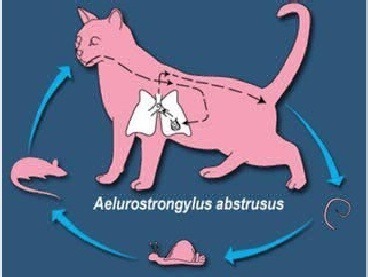
The life cycles of other lungworms are similarly complicated. Pet parents are encouraged to consult with their family veterinarian or a board-certified veterinary internal medicine should they want more specific life cycle information about other lungworm genera.
Lungworm Infection – What does it look like?
There is no breed, age, or sex predilection for lungworm infection in cats. Clinical signs appear to be related to the larval burden of a specific cat. In other words, cats with few L3 larvae (less 1600) may have no clinical signs. Conversely, those infected with a large number of L3 larvae (more than 1600) can develop clinical signs after five weeks. Common clinical signs include chronic coughing, difficulty breathing, and weight loss. Large larval burdens have also been associated with right-sided heart murmurs (due to right atrioventricular valve regurgitation) and the development of abnormal fluid accumulation in the abdominal cavity (called ascites), both presumably due to pulmonary hypertension.
Lungworm Infection – How is it diagnosed?
Lungworm infection should be considered a possibility in any cat with chronic coughing and/or breathing difficulties. After a obtaining a thorough patient history and performing a complete physical examination, a veterinarian will recommend some initial non-invasive tests, most notably chest radiographs or x-rays. In fact, evaluating chest radiographs is typically the first diagnostic test recommended for cats with histories of abnormal breathing and coughing. There are no specific changes on radiographs that are diagnostic for lungworm infection. Radiographic changes vary depending on the larval burden in the lungs. Definitive diagnosis requires fecal testing, typically either a polymerase chain reaction (PCR) analysis or a Baermann technique. Other fecal flotation techniques (i.e.: zinc sulfate) may also be indicated.
Lungworm Infection – How is it treated?
Treatment of cats with lungworm infections is relatively straightforward. Each parasite is sensitive to different drugs that are either administered orally or as spot-on topical medications. Commonly prescribed drugs include fenbendazole, praziquantel, emodepside, selamectin, and moxidectin. Very rarely do cats require lung surgery to remove a segment of lung irreparably damaged by ruptured parasitic cyst(s). Your family veterinarian and/or a board-certified veterinary internal medicine specialist will be able to guide you regarding the most effective treatment strategy for your pet.
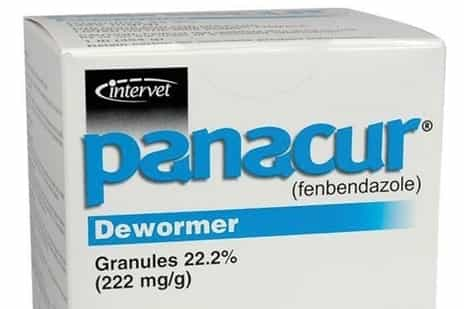
The take-away message about lungworm infection in cats…
Lungworm infection is a relatively common and under-appreciated cause of chronic respiratory problems in cats. Obtaining a definitive diagnosis is straightforward. Most cats respond very well to oral or spot-on therapies and go on to lead happy normal lives.
To find a board-certified veterinary internal medicine specialist, please visit the American College of Veterinary Internal Medicine.
Wishing you wet-nosed kisses,
CriticalCareDVM


